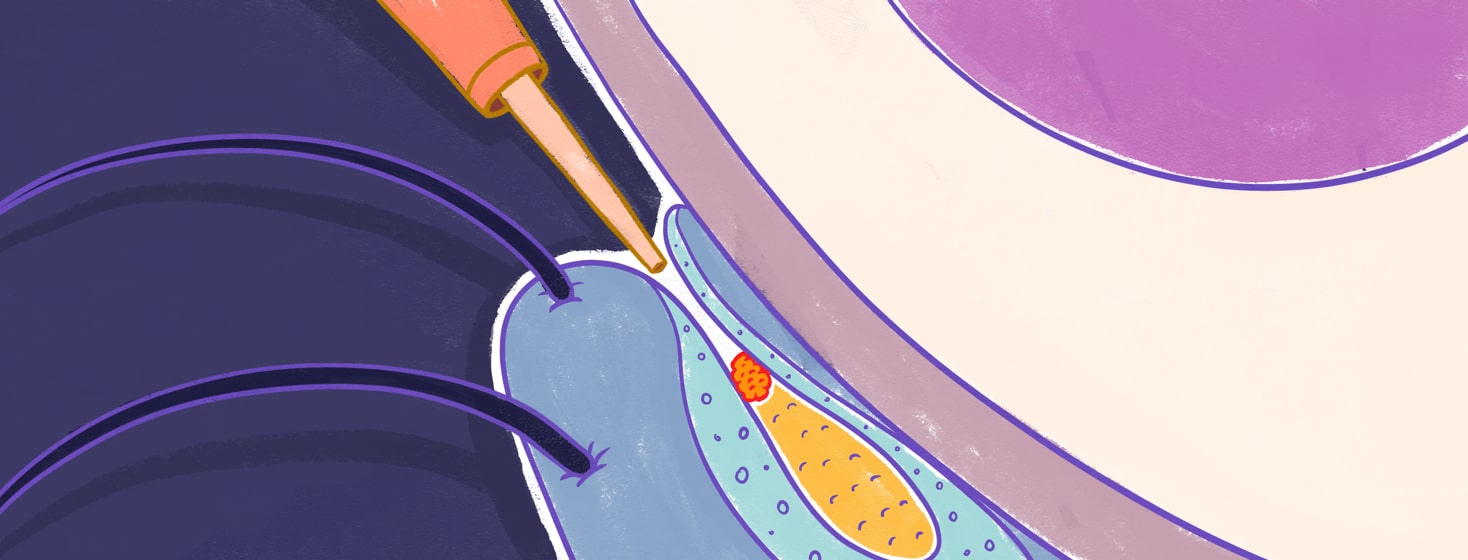Meibomian Gland Probing: What’s That?
There are so many different treatments out there for chronic dry eye it can be a little confusing, so I’d like to share my recent experience with another one you may not have heard about: meibomian gland probing. This is another “what on Earth is that?” for those of us new to chronic dry eye treatments but it’s actually been around for a long time.
Meibomian gland probing
First developed by Dr. Steven Maskin in the 1990s, Meibomian gland probing involves the use of a tiny sterile probe that the eye doctor inserts into the opening of each oil gland on your eyelid. This breaks up any scar tissue blocking the oils from coming out. Sounds kind of scary doesn’t it?1
I must admit that this procedure did make me nervous beforehand. I have had meibomian gland expression done several times, and it’s a bit uncomfortable but didn’t scare me. Because this procedure is more invasive it was harder not to worry. But I trust my eye doctor, and he’s been doing probing for several years.
Safety, risks and benefits
There are also several safety precautions. First, they applied numbing drops to my eyes. Then a protective contact lens was put in each eye. This covers the eyes during the entire procedure. Next, the doctor spread a lidocaine ointment thoroughly across all my eyelids to completely numb them during the procedure. We also waited 15 minutes to be sure it had been completely absorbed.
Before the doctor even started he explained everything carefully to me, both the potential risks and potential benefits, and what it would be like. He told me we could take a break whenever I felt like I needed one. They also offered me a mild sedative to get through it, but I didn’t feel like I needed one so I declined it.
Pops and oil
“This is just a test run,” he said as he was getting started, and asked me if I felt anything. I didn’t feel anything at all, so that was the green light to keep going. Eventually I did start to feel some tiny pops (but no pain). That’s a good thing actually. It means the probe has broken through some scar tissue and opened up the gland.
As the doctor worked his way around each of my eyelids there were more and more of these little pops — sometimes not so little. He described each of these to the tech helping record the procedure. Some were “gritty” and some were just pops. I ended up having some degree of a pop from about 90 percent of my glands, and some of them showed oil coming out as soon as they were probed.
We took a break after each eyelid was done. Because I had handled everything so well, the doctor decided to go over 3 of my eyelids again with a slightly longer probe. This one I felt a bit more, but it was not painful.
At the end of all this, the doctor came back with forceps to do another expression to get more oils out. This went much better than usual for me, so the doctor was really excited and felt like the procedure had been a huge success. He also said “you are the all time champ” for how well I handled it.
Aftercare
It may take some time to tell how effective probing was for me, but since many of my glands were not showing any oil coming out during expression I felt it was worth a shot and the extra expense. I left with a prescription for a steroid eye drop to get through the uncomfortable days while any swelling or irritation settles down. But I also left with a little more hope.

Join the conversation